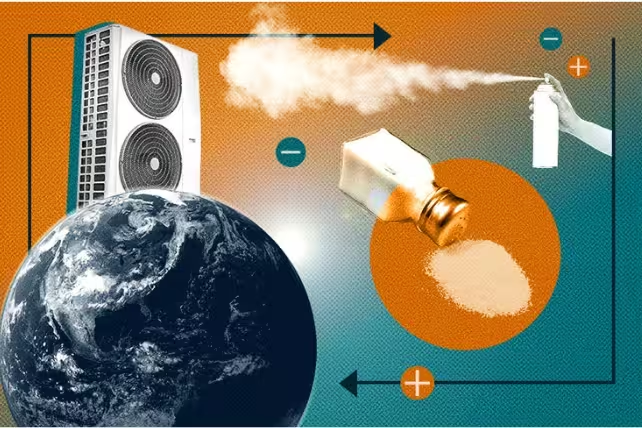Scientists have invented a completely new way to cool objects
- October 28, 2024
- 0
Say hello to ionocaloric cooling. This is a new way to lower temperatures that has the potential to replace current cooling methods with a process that is safer
Say hello to ionocaloric cooling. This is a new way to lower temperatures that has the potential to replace current cooling methods with a process that is safer

Say hello to ionocaloric cooling. This is a new way to lower temperatures that has the potential to replace current cooling methods with a process that is safer and better for the planet. Typical cooling systems remove heat from space through a liquid that absorbs heat as it evaporates and turns into a gas; This is then transported through a closed pipe and condensed back into liquid. Despite the efficiency of this process, some of the materials we use as refrigerants are particularly harmful to the environment.
However, there is more than one way to make a substance absorb and release heat energy.
The method, described last year by researchers at the Lawrence Berkeley National Laboratory and the University of California, Berkeley, takes advantage of the way energy is stored or released when a material changes phase, such as solid ice turning into liquid water.
Raise the temperature of a piece of ice and it will melt. What we may not readily realize is that melting absorbs heat from the environment, effectively cooling it. One way to make ice melt without needing to increase the heat is to add charged particles or ions. Sprinkling salt on roads to prevent ice formation is a typical example. The ionocaloric cycle also uses salt to replace the liquid phase and cool the environment.
“The refrigerant environment is an unsolved problem,” Drew Lilley, a mechanical engineer at Lawrence Berkeley National Laboratory in California, said in January 2023. “No one has successfully developed an alternative solution that cools things down, works efficiently, is safe and doesn’t harm the environment. “We believe ionocaloric cycling has the potential to achieve all of these goals if implemented correctly.”

By modeling the theory behind the ionocaloric cycle, researchers have shown how it could potentially compete with and even improve on refrigerants used today. A current passing through the system will move the ions within it, changing the melting point of the material and changing the temperature.
The team also conducted experiments using salt made from iodine and sodium to dissolve ethylene carbonate. This common organic solvent is also used in lithium-ion batteries and is produced using carbon dioxide as the raw material. This could make the system more than GWP [потенціал глобального потепління] zero, but GWP is negative.
The experiment measured a temperature change of 25 degrees Celsius (45 degrees Fahrenheit) by applying a load of less than one volt; This is a result that exceeds what other caloric technologies have achieved.
“We’re trying to balance three things: the GWP of the refrigerant, the energy efficiency, and the cost of the equipment,” said Ravi Prasher, a mechanical engineer at Lawrence Berkeley National Laboratory. “From the first trial, our data looks very promising in all three respects.”
Vapor compression systems currently used in refrigeration processes rely on high-GWP gases such as various hydrofluorocarbons (HFCs). Countries that signed the Kigali Amendment have committed to reducing the production and consumption of HFCs by at least 80 percent over the next 25 years, and ionocaloric cooling can play a key role in this.
Now researchers need to move the technology from the laboratory to practical systems that can be used commercially and easily scaled. Eventually these systems can be used for both heating and cooling.
“We have a completely new thermodynamic cycle and framework that brings together elements from different fields, and we’ve shown that it can work,” Prasher said. “Now is the time for experiments to test different combinations of materials and techniques to meet engineering challenges.” The study was published on: Science.
Source: Port Altele
As an experienced journalist and author, Mary has been reporting on the latest news and trends for over 5 years. With a passion for uncovering the stories behind the headlines, Mary has earned a reputation as a trusted voice in the world of journalism. Her writing style is insightful, engaging and thought-provoking, as she takes a deep dive into the most pressing issues of our time.